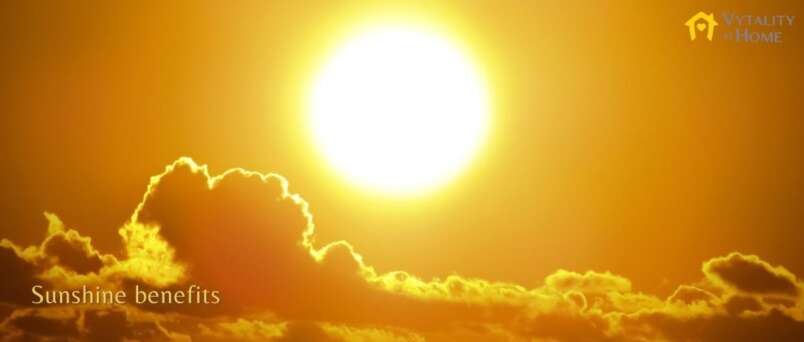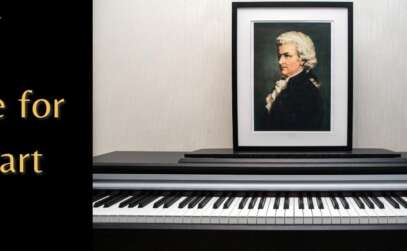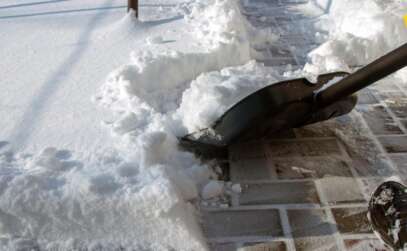Seniors, spring sunshine, vitamin D and reducing COVID risks
It’s been a tough winter for all of us, but especially for our older seniors who have been isolating in their own homes. Whilst others have been able to access skating rinks, sledding hills and other outdoor recreation amenities, our more senior seniors with mobility and health issues have had to remain inside.
Looking ahead to some sunshine
April is the month here in Calgary where the weather usually shifts from winter chills to more spring-like days. It’s often the month when seniors who don’t like the cold and ice look forward to trips out in the spring sunshine again.
However, with the whole province returning to Step 1 of the roadmap of COVID precautions, many may feel more hesitant, yet also more confined. So, what can you do to help your senior relatives get outside their home in relative safety, and not miss out on feeling the spring air on their faces?
Simple: help them sit outside in the sunshine for a short while.
Basking in a ray of spring sunlight makes everyone feel better. The weather forecast for next weekend (Sat 17/Sun 18 April) sees temperatures rise to around 12 degrees. Not exactly tropical we agree, but with blue skies and sunshine, it’s ideal for a sit in the sun with a winter coat, gloves and hat, and a warm blanket over the knees.
Visit seniors while the sun shines
Under Step 1 of the COVID-19 road map, all indoor social gatherings are prohibited. (This restriction does not apply to service visits from caregivers, health or childcare providers. That’s why our home care team can continue to provide care throughout the roadmap stages.)
However, you can meet outdoors in a group of no more than 10, following social distancing guidelines. So you can go to a senior relative’s own home and sit outside in the sunshine with them, so long as you observe social distancing.
Try to sit parallel to them so you are not talking directly into their faces, or wear a face mask to reduce the risk of aerosol travel. There is clear evidence that ultraviolet light destroys the virus rapidly in the open air, so the risks are even lower on a sunny day.
Sunshine and ventilation
If the wind is chilly, encourage seniors to sit and soak up the sun in an open doorway for a while (and ignore the protests about “letting all the heat out”!). Ventilation is key to the lowering of COVID transmission risks indoors. A blast of fresh air into their home will help them and any home carers stay safer too. You, meanwhile, can sit on the patio, decking, garden or even out on the sidewalk without needing to enter their home at all.
Sunshine and senior temperature regulation
The secret of enjoying spring sunshine as a senior is to limit exposure time for two reasons:
- to prevent skin damage, and
- to avoid issues with temperature regulation
Seniors may not feel they are heating up, so ensure that they are outside for a short time, apply higher SPF sunscreen, and keep hydrated.
Vitamin D and COVID-19
Sunshine is particularly important in these COVID times to help increase our vitamin D levels. In their paper “Vitamin D and COVID-19: Lessons from Spaceflight Analogs”, the authors suggest that “vitamin D status may be involved in the severity of the immune response to SARS-CoV-2 infection.”
Vitamin D is not found in many foods, so our bodies also synthesize vitamin D after exposure to UV-B rays from the sun. However, it has been estimated that around 1 billion people worldwide are vitamin D deficient. Those living in further from the equator (i.e. Canadians!) have lower vitamin D levels, and 61% of the elderly are deficient due to age decreasing the ability of the skin to synthesize it. Indeed, one report found that “50–60% of nursing home and hospitalized patients had insufficient levels of vitamin D.”
It’s little wonder therefore that the authors suggest:
“We recommend that people maintain optimal vitamin D status to support immune function and lower their risk of viral reactivation, a recommendation that also comes from our National Aeronautics and Space Administration (NASA)–funded research. We are not advocating for ultra-high doses of vitamin D supplementation because of possible side effects, but rather a level of supplementation that will prevent vitamin D deficiency.”
According to Healthline.com, in their excellent article on “How to safely get Vitamin D from sunlight”
“Regular sun exposure is the most natural way to get enough vitamin D. To maintain healthy blood levels, aim to get 10–30 minutes of midday sunlight, several times per week.”
Senior skin and sun damage
It is important to remember that seniors’ skin is more fragile than younger skin, and is vulnerable to potential damage whenever exposed to natural sunlight. It is the UVA rays that cause most of the damage over our lifetime, as they penetrate deeper into our skin layers. UVB rays are shorter and cause sunburn. Experts advise that seniors with thin or no hair wear a hat in sunlight, wear sunglasses, and use UVA/UVB sunscreen of at least SPF30 to protect exposed skin. Also, certain medications can make senior skin more sentative to sunlight.
This begs the question, will using sunscreen on exposed skin prevent seniors affect the production of vitamin D? According to Healthline:
“In theory, wearing sunscreen may reduce the ability to produce vitamin D, but short-term studies have shown it has little or no impact on blood levels.”
So, why not enjoy some spring sunshine with a senior loved one – and boost your own vitamin D levels too! Or if you can’t be there, let us help out instead. Our Calgary home care team are here to help seniors age in place in their own homes, and that includes helping them get out and about in safety. For more details or to discuss providing home care for a relative, just




